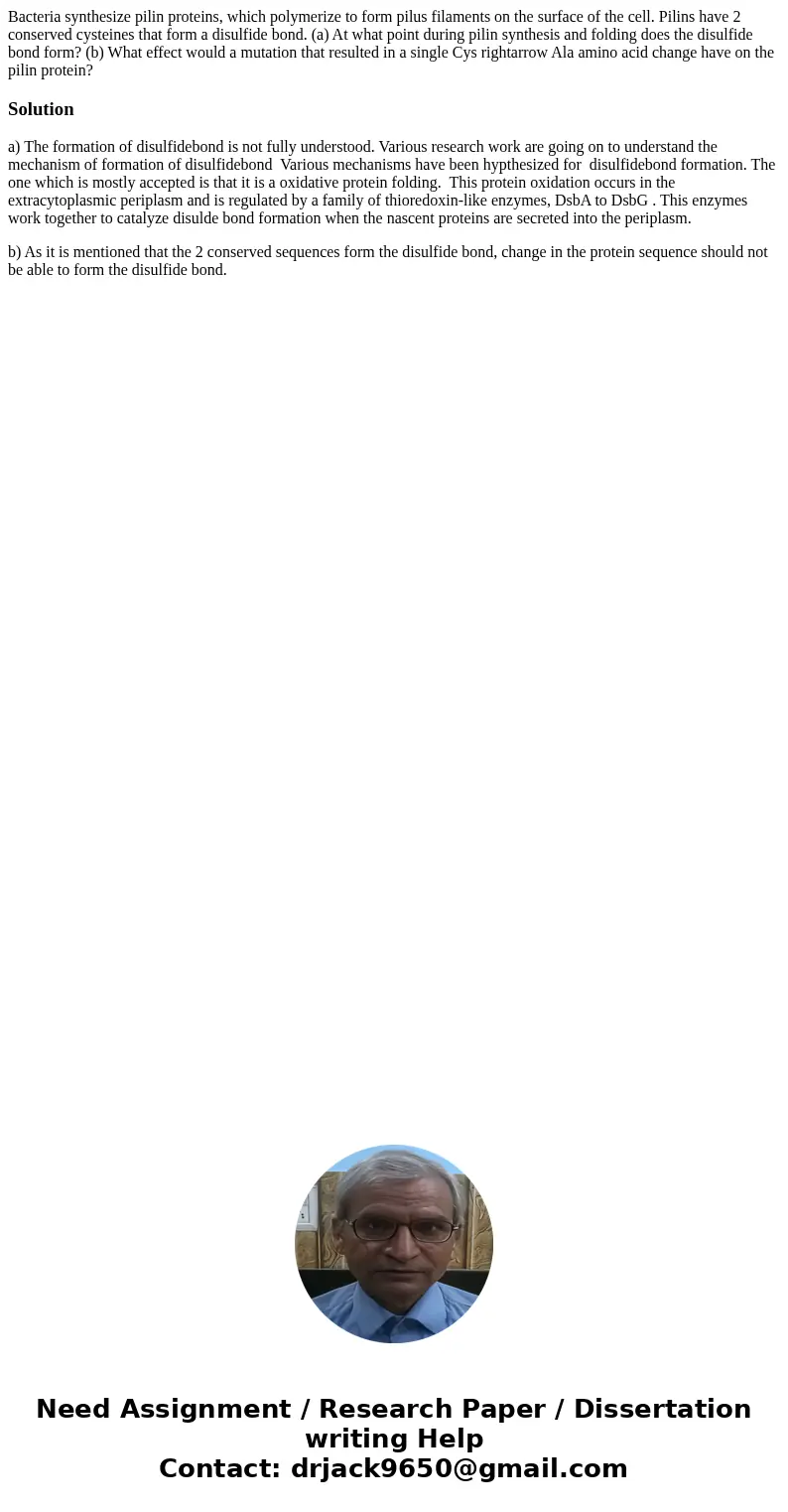Bacteria synthesize pilin proteins which polymerize to form
Bacteria synthesize pilin proteins, which polymerize to form pilus filaments on the surface of the cell. Pilins have 2 conserved cysteines that form a disulfide bond. (a) At what point during pilin synthesis and folding does the disulfide bond form? (b) What effect would a mutation that resulted in a single Cys rightarrow Ala amino acid change have on the pilin protein?
Solution
a) The formation of disulfidebond is not fully understood. Various research work are going on to understand the mechanism of formation of disulfidebond Various mechanisms have been hypthesized for disulfidebond formation. The one which is mostly accepted is that it is a oxidative protein folding. This protein oxidation occurs in the extracytoplasmic periplasm and is regulated by a family of thioredoxin-like enzymes, DsbA to DsbG . This enzymes work together to catalyze disulde bond formation when the nascent proteins are secreted into the periplasm.
b) As it is mentioned that the 2 conserved sequences form the disulfide bond, change in the protein sequence should not be able to form the disulfide bond.

 Homework Sourse
Homework Sourse